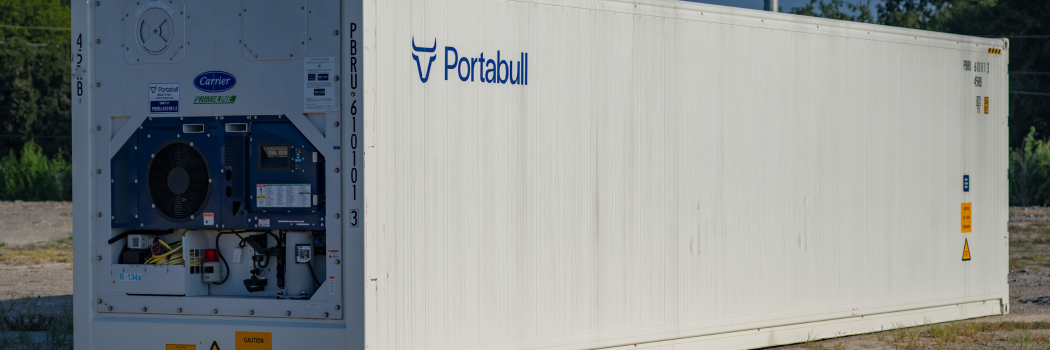While diesel reefers are useful when product needs to be regularly transported from one site to another, during short-term power loss, or when you can’t connect to an electrical grid, using Portabull electric units for cold storage significantly reduces cost & emissions vs. using diesel trailers. Read on to see why, or click here to view a cost comparison.
- Diesel-powered storage contributes to increased cost and CO2 emissions and releases Nitrogen Oxides (NOx) and Particulate Matter (PM) into the atmosphere
- Based on national averages, when our units replace diesel trailer storage units, our customers experience cost savings of ~63% and a reduction in CO2 emissions of ~70%. See how much you could save here.
- Electric cold storage units are mechanically and structurally durable:
- Reducing time to reach set point temperature
- Limiting temperature set point variance
- Decreasing troubleshooting and repair because they are purpose-built for cold storage
- Eliminating the need to refuel constantly, putting your product in jeopardy
- Reducing carcinogens in diesel exhaust which the Environmental Defense Fund states contributes to more than 75% of added cancer risk in the US
- Significantly reducing air leakage vs. a diesel reefer trailer
- Portabull electric units are superior in eliminating air leakage and wind and water tight, allowing less ambient air into the unit and thus reducing the stress and energy consumption on temperature-control technology while maintaining a set point. All Portabull units come with a leak-free guarantee
- Electric cold storage containers free up dock space for deliveries with ground-level access
Note: Portabull has electric dock options available - Portabull electric refrigerated and freezer containers are designed to be accessed regularly while maintaining your desired temperature range with features like:
- Lights
- Ramps
- Specially designed easy-open doors
- Flat or grooved floors
- Interior safety releases and alarm access
- 24/7 service
Call us today or request a quote and let the Portabull experts walk you through options to optimize your business’s cold storage. Learn more about Portabull here.

